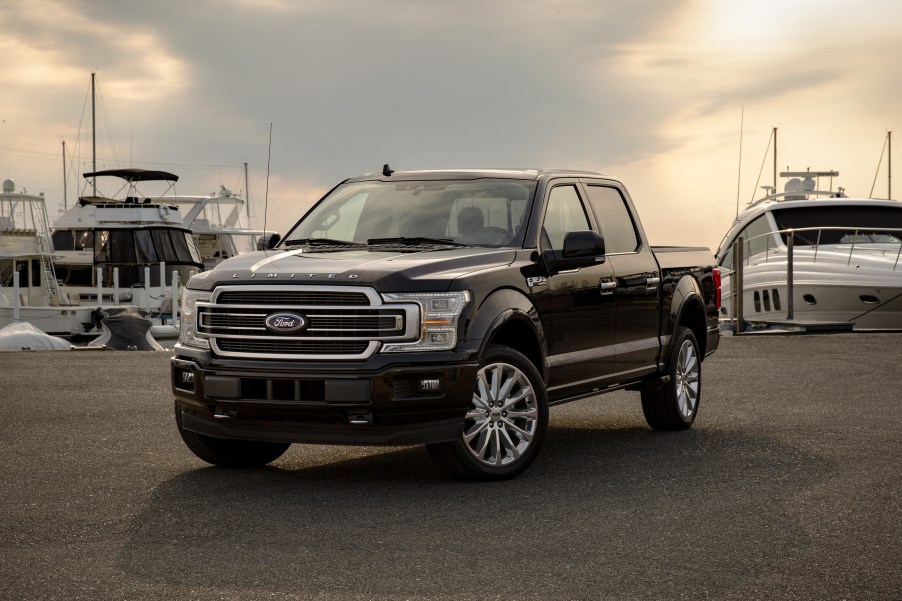
What Car and Driver Liked and Disliked About the Ford F-150’s Powertrain
The Ford pickup is now in its thirteenth generation, and it doesn’t show signs of stopping any time soon. First introduced around 1950 with the humble F-3, the F-series has kept its place at the top of the current market despite many competitors. The 2018 model of the F-150 was the best-selling truck in the U.S. last year.
So far, the F-150 hasn’t lost its first-place rank in 2019. There’s a lot to love about the 2019 F-150, but is it the perfect truck? Car and Driver got to test the car in every available trim and powertrain. Here’s what they had to say about America’s most popular pickup truck.
All those engines
The F-150 has the most extensive lineup of engines out of any pickup truck on the current market. It has a standard V6 3.3-liter engine with 290 hp and 265 lb-ft of torque. It’s paired with a six-speed transmission, but every other engine offers a ten-speed transmission.
The F-150 is almost as agile as a smaller car, thanks to its engines with more torque. The 3.0-liter turbodiesel has 440 lb-ft, while the turbocharged 3.5-liter boasts an impressive 470 lb-ft. If you want to get the most towing power, get the available towing package and the V6 3.5-liter engine.
Powerful, easy towing

Speaking of towing, the F-150 has the highest towing capacity of any of its rivals. Its biggest competitor, the Chevy Silverado, can tow up to 12,500 pounds. The Ford F-150 can tow 700 pounds more. It also has a maximum payload of 3,270 pounds.
Thanks to its powerful engines, the F-150 can tow large loads anywhere with minimal strain, including up and down hills. It also has many driver’s assistance features designed specifically for trailer safety including hitch assistance, trailer sway control, trailer backup assistance.
Lacking interior comfort
If you’re driving over smooth roads, the F-150 behaves itself without a problem. However, it’s not the best on uneven pavement or other kinds of terrain, even with the more powerful engines. In off-roading situations, the Raptor was reported to fare the best, but other trims had bumpier rides and vibration near the back of the truck.
C/D also noted that the suspension system didn’t give them as comfortable of a driving experience as the Ram 1500. While the F-150 only comes standard with rear-wheel drive, you can add on four-wheel drive for better performance.
Sluggish acceleration
While a ten-speed transmission is the most ideal for making precise movements, C/D found that it made the F-150 slow to accelerate. Its most powerful V6 engine, which has 450 hp and 510 lb-ft of torque, reached 0 to 60 in 6.3 seconds. This isn’t terrible for a pickup truck, but a little disappointing considering the weaker base engine could reach 60 mph in 5.7 seconds. The trade-off is that the ten-speed helps the F-150 tow with ease, which is ultimately the biggest concern for most truck buyers.
What’s next for the F-150?
The 2020 edition of the F-150 is set to be released before the end of this year. There are no major changes to the powertrain, but those who buy the XLT trims can have a Power Stroke turbodiesel engine. Some new colors for certain trims were also announced, and the Lariat now has a standard driver’s assistance technology suite.
The all-electric version of the F-150 will probably make its debut by 2021. No details have been released about the specifics of its powertrain yet, but we’re intrigued to see if it’s as powerful as its gas-operated counterpart.



